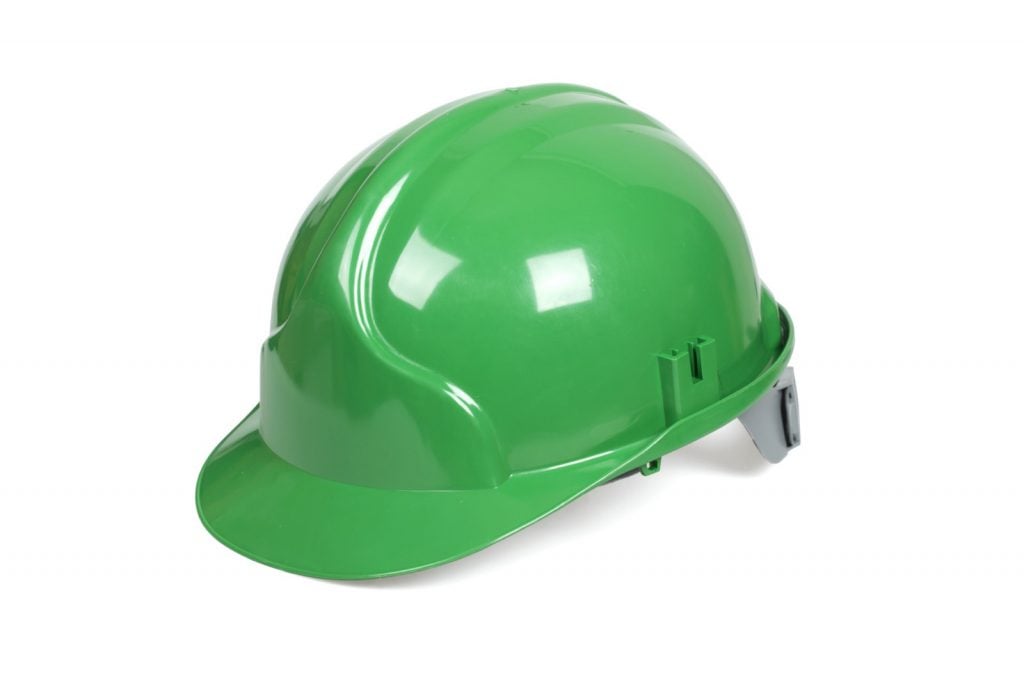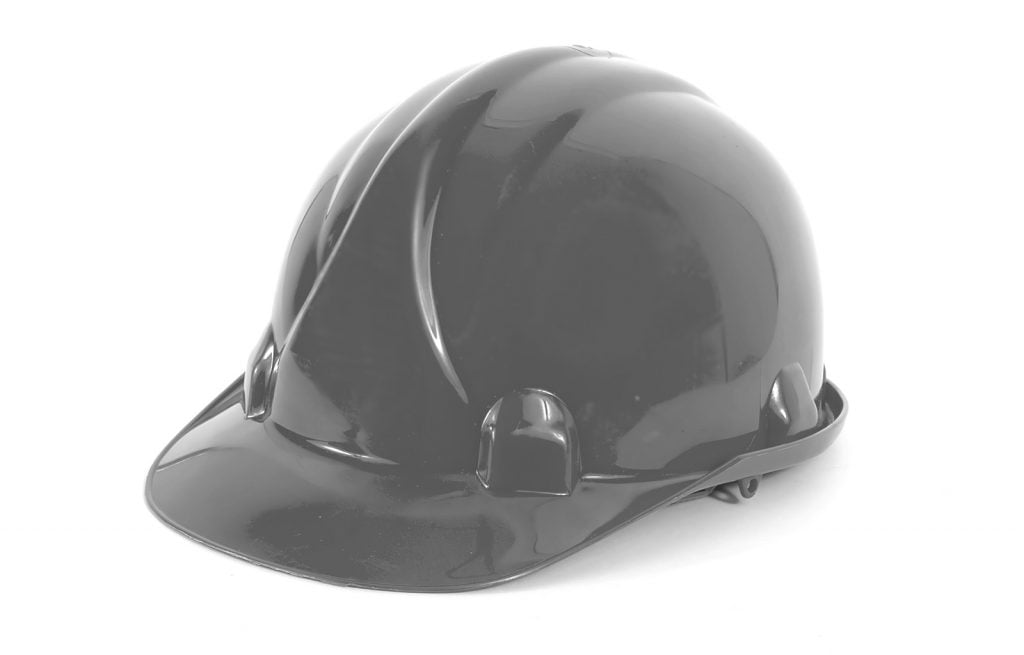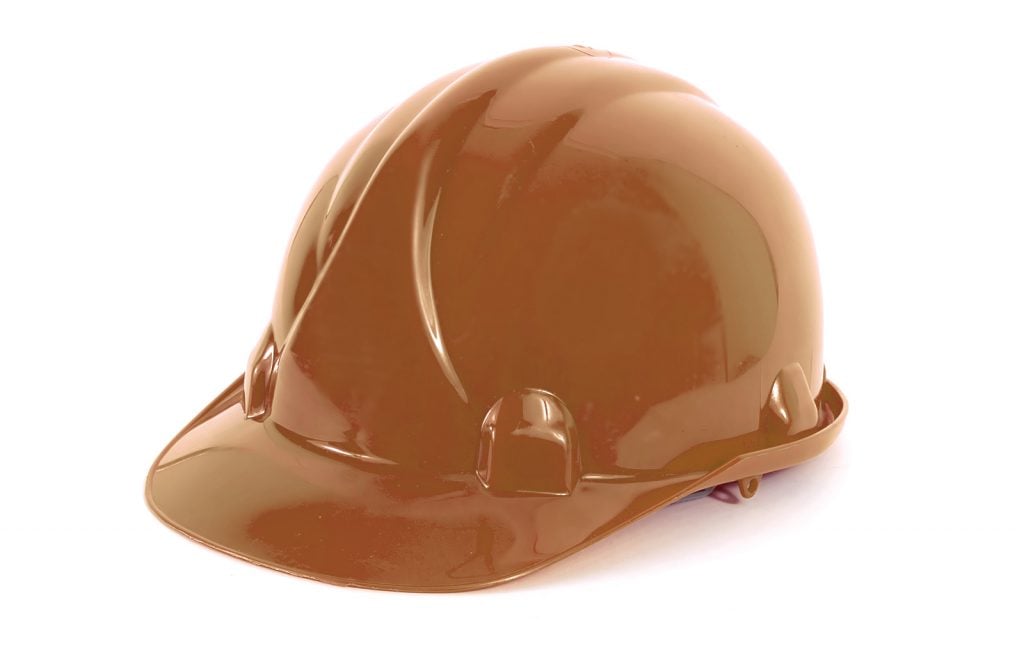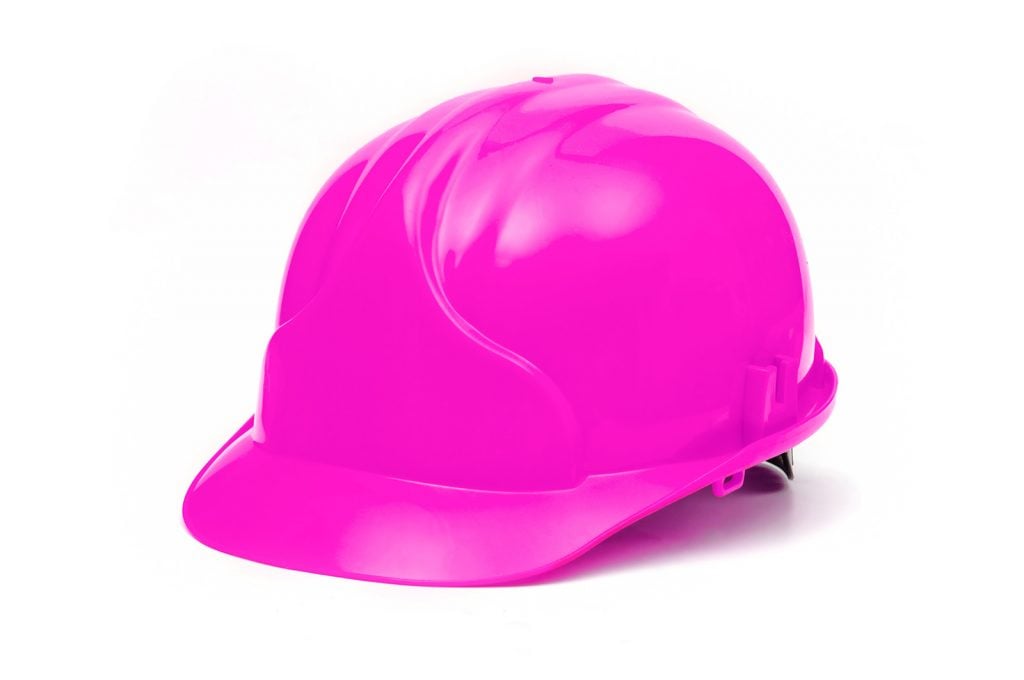What Color Hard Hat Should I Wear

Individuals all over the world use hard hats for numerous different reasons. The first scale for hard hats is believed to date back to the 1930s in the United States. Hard hats were first used in California during the construction of the Hoover Dam and the Golden Gate bridge. They are necessary due to dangers on worksites resulting from the number of employees, the type of equipment necessary and the potential for serious accidents.
The design of hard hats provides protection and comfort for the worker while helping to substantially decrease injuries at the workplace. Many workers are overwhelmed and confused due to the number of colors available. This is one of the reasons industry standards were developed to provide guidance regarding the color required for specific industries. Hard hats keep workers organized, safer and more comfortable.
OSHA Industry guidelines were originally established during the 1970s. Wearing a hard hat is now a requirement for a wide variety of industries. This type of protective headgear protects the worker's head from flying or falling objects, prevents injuries due to electrical or heat burn and from falls on moving or irregular surfaces previously resulting in serious injuries from an impact.
OSHA requires hard hats for any industry with a high potential for injury. Despite the guidelines being extremely clear, many workers remain unaware of the importance of wearing the right colored hard hat.
Why are Hard Hats Important?

One of the most critical areas for hard hats is construction sites. Protective head coverings provide the worker with protection from being struck in the head on the job site. Injuries to the head are often severe and can result in death or permanent brain damage. Hard hats provide workers including carpenters, welders, electricians and plumbers with ear, neck and eye protection.
Potential injuries for an unprotected head are dependent on the specific hazards for each industry including unexpected events and falls. The hard hat color-coding system ensures each worker has the right type of protection necessary for their industry. For larger projects, the responsibilities of every worker are easily identifiable according to the color of their hard hats.
Some hard hats are manufactured specifically for the needs of different industries including face shields, earmuffs, light attachments for miners and reflective stripes. The idea is to ensure each worker has optimal protection while on the worksite.
Standards for Hard Hat Safety
Hard hats are required to meet or exceed specific standards. There are different makes and types available to ensure protection for the workers. High-quality hard hats should provide resistance to shocks and prevent sharp objects from piercing the protective covering. Water, heat and electrical currents should be unable to penetrate to the interior of the hat.
The Importance of Hard Hat Color Codes
The color of the hard hat is critical for proper protection. In an emergency, the color enables the correct worker to be contacted such as firefighters, police and medical personnel. Specific workers are easily identified by supervisors and allow workers to locate each other on the worksite to improve efficiency. Workers can easily find a supervisor to ask essential questions.
Meanings for Different Hard Hat Colors
Hard hats accurately identify the role of every worker. Despite the differences in color coding for different organizations and countries, the basics remain the same. The purpose of each color is detailed below.
1. White Hard Hats

Since white is one of the easiest colors to see, it has been designated for individuals with higher rankings including supervisors, managers, architects and engineers. In addition to a white hard hat, vehicle marshals are also required to wear high visibility vests.
2. Orange Hard Hats

Due to the high visibility of orange, this color is required for road construction. Orange is also necessary for traffic marshals and lifting operators.
3. Green Hard Hats

Since green is usually linked to safety, this color is worn by safety inspectors. New workers also wear green as an indication they are still on probation.
4. Red Hard Hats

The color red generally signifies danger or fire. For this reason, emergency workers and firefighters wear red hard hats.
5. Yellow Hard Hats

General workers wear yellow as an indication there is no specialty. This includes earthmovers, laborers and operators of heavy machinery.
6. Gray Hard Hats

Visitors to any worksite are generally provided with a gray hard hat.
7. Blue Hard Hats

Blue is reserved for both medical workers and electricians.
8. Brown Hard Hats

Brown identifies workers using applications involving high heat such as welders.
9. Pink Hard Hats

Pink hard hats are used as a way to punish any worker that forgot or lost their hard hat. Pink is also a temporary solution until a broken hard hat can be repaired or replaced. The color is very popular with female workers.
The Idea Behind the Hard Hat Color Code
In addition to safety, hard hats come in different colors for the identification and responsibilities of individual workers. A good example is any repair work being conducted for a major electrical repair in a commercial building. If the power on a specific floor needs to be turned off, the supervisor can easily locate the worker responsible for that floor from the crowd and other workers.
The result is faster action, eliminating potential delays and the protection of the employees working in the building. Another example is the need to stop a specific machine from operating. The ability to find the worker quickly allows the machine to be shut down sooner to avoid any potential accidents. Hard hats protect workers from falling objects including bricks, wood and metal rods eliminating the possibility of penetration.
Supervisors are able to identify workers quickly and easily. Workers can locate essential personnel much faster during an emergency such as police and firefighters. The hard hat color system is critical for safety, asking essential questions and improving worker relations.
Classes of Hard Hats
Hard hats are available in two key types. The more basic hard hat is classified as type I. This provides the worker with one-time protection but does not include lateral protection. Type II offers a lot more security than type I. Workers are protected from both lateral impacts and impacts occurring on the top of the head. Type II hard hats provide workers with protection for the entire head.
Electrical Hard Hats

Electrical hard hats are the only ones with different classification. The three classifications are:
E-Class
Electrical hard hats are defined with an E. Linemen are provided with protection for a minimum of 15,000 volts. This is different than voltage protection for just the head. E-class protection is for the entire body, making this classification important for electrical workers.
G-Class
This type of protection is intended for general workers but is not as effective as the E-class. This hat is for low voltage workers only. Low voltage is classified as approximately 2,000 volts. This hard hat will work well for this type of voltage.
C-Class
The C is in reference to conductive. C-class is not recommended for electricians because it only offers protection for impacts. The majority of these hard hats contain some amount of aluminum. This means when used for electrical purposes, C-class hard hats are considered a life hazard.
How Do I Take Care of My Hard Hat Properly?

Taking proper care of a hard hat is essential for the prevention of harm or injuries to both the face and head. It ensures the worker will be protected from inevitable accidents. When a hard hat is damaged, it must be replaced immediately or worker protection is compromised. There are numerous techniques to make certain hard hats provide optimal protection:
- Whenever possible, hard hats should not be exposed to direct sunlight or effectiveness can be lost. For this reason, many workers must replace their hard hats on a fairly regular basis.
- Hard hats need to be dry and cool for maximum effectiveness, so make sure you store the hat in a cool and dry place when you are not using it.
- The shell of the hard hat should not be modified or changed in any way.
- Unless recommended by the manufacturer, hard hats should not be worn backwards.
- Even when no visible damage is present, if a hard hat was involved in a workplace accident, it should be replaced.
- Heavy objects should not be carried or placed on the head while wearing a hard hat.
- Soapy warm water should be used regularly for cleaning hard hats.
- Placing excessive stickers on a hard hat is not recommended.
- Hard hats should not be exposed to chemicals, sharp objects, thinners, paint and solvent-based adhesives.
- When necessary, any parts including sweatbands should be replaced.
Using the above techniques will enable workers to wear hard hats for longer periods of time without any damage. Always read the manufacturer's directions and suggestions to ensure proper care. There is an expiration date for hard hats due to the deterioration of the material as time passes and consistent use. The expiration date is included with the hard hat to ensure the worker replaces the helmet at the proper time.
The Final Word
Every worker in an industry where there is a possibility for accidents and injuries should wear a hard hat. Safety is imperative for numerous industries. The color of the hard hat must match the industry of the worker. Checking hard hats on a regular basis for any damage is extremely important. If there is any doubt, the hat should be replaced immediately.
Taking care of a hard hat will ensure optimal protection for the worker. The system for color-coding was created to help make certain the workers are safe, improve efficiency and for the identification of key personnel.
What Color Hard Hat Should I Wear
Source: https://www.color-meanings.com/hard-hat-color-codes-meanings/
0 Response to "What Color Hard Hat Should I Wear"
Post a Comment